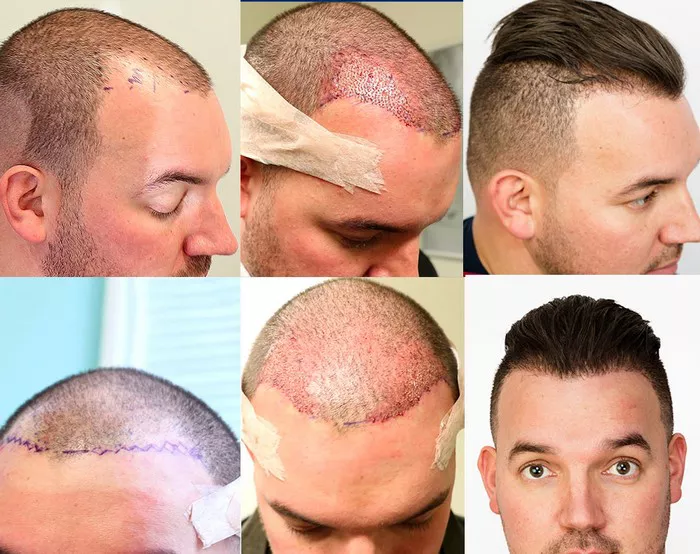Hair loss can have a profound impact on one’s self-esteem and overall well-being. Hair transplant surgery has emerged as an effective solution for individuals seeking to restore their hairline and achieve a fuller head of hair. If you’re considering a hair transplant, it’s natural to have concerns about the level of discomfort involved. In this comprehensive guide, we will explore the comfort level of hair transplant procedures, the various techniques used, pain management options, and important considerations to help you make an informed decision.
Understanding Hair Transplant Procedures
Hair transplant surgery involves the redistribution of healthy hair follicles from a donor area to the recipient area, where hair loss or thinning has occurred. The two primary techniques used in hair transplantation are Follicular Unit Transplantation (FUT) and Follicular Unit Extraction (FUE). FUT involves the removal of a strip of hair-bearing skin from the donor area, while FUE involves the extraction of individual hair follicles directly from the donor area.
During the procedure, the surgeon carefully implants the hair follicles into the recipient area, ensuring proper placement and alignment to achieve a natural-looking result. Local anesthesia is used to numb the scalp, making the procedure generally comfortable for patients.
Pain Management during Hair Transplant Procedures
Hair transplant procedures are designed to be as comfortable as possible for patients. Pain management techniques are employed to minimize discomfort during the procedure. Here are the primary methods used to ensure patient comfort:
1. Local Anesthesia
Local anesthesia is administered to numb the scalp before the hair transplant procedure. This ensures that patients do not experience pain or discomfort during the surgery. The anesthetic is injected into the scalp, targeting the donor and recipient areas. The numbing effect allows the surgeon to perform the procedure without causing discomfort to the patient.
2. Sedation Options
Some clinics may offer sedation options to help patients relax during the procedure. Sedation can range from mild sedatives that induce a state of relaxation to more profound sedation, such as intravenous (IV) sedation. The use of sedation is determined on a case-by-case basis, considering the patient’s comfort level and specific needs.
3. Pain Medication
After the hair transplant procedure, patients may experience mild discomfort or soreness in the donor and recipient areas. The surgeon may prescribe pain medication or recommend over-the-counter pain relievers to manage any postoperative discomfort. It’s important to follow the prescribed medication instructions and communicate any concerns or questions with your surgeon.
Discomfort Level during Hair Transplant Procedures
Hair transplant procedures are generally well-tolerated by patients and are considered minimally invasive. The use of local anesthesia ensures that patients do not experience pain during the procedure. However, it’s important to note that individual experiences may vary based on factors such as pain tolerance, anxiety levels, and the specific technique used. Here are the primary aspects to consider regarding the discomfort level:
1. Anesthesia Administration
The administration of local anesthesia involves the use of small needles to inject the numbing agent into the scalp. Some patients may experience mild discomfort or a pinching sensation during the anesthesia administration process. However, the discomfort is typically minimal and transient.
2. Sensation of Pressure
During the hair transplant procedure, patients may experience a sensation of pressure or tugging as the surgeon removes and transplants hair follicles. This is a normal part of the procedure and should not be painful. The local anesthesia ensures that patients do not feel pain during this process.
3. Postoperative Discomfort
After the hair transplant procedure, patients may experience some mild discomfort, soreness, or tightness in the donor and recipient areas. This discomfort is usually manageable with pain medication and subsides within a few days. It’s important to follow the postoperative care instructions provided by your surgeon to minimize any discomfort and promote proper healing.
Important Considerations
When considering the comfort level of a hair transplant procedure, it’s crucial to keep the following considerations in mind:
1. Communication with Your Surgeon
Open and clear communication with your surgeon is vital in ensuring your comfort during the hair transplant procedure. Discuss any concerns or anxiety you may have with your surgeon, as they can provide reassurance and address any questions or apprehensions you may have.
2. Pain Management Options
Discuss pain management options with your surgeon prior to the procedure. Understanding the pain management techniques that will be used, such as local anesthesia and potential sedation options, will provide you with a better understanding of what to expect and ensure your comfort during the procedure.
3. Individual Pain Tolerance
It’s important to recognize that individual pain tolerance varies. While most patients report minimal discomfort during hair transplant procedures, some individuals may have a higher sensitivity to pain. If you have concerns about pain or discomfort, discuss this with your surgeon during the consultation to determine the best approach for your specific needs.
4. Postoperative Care and Healing
Following the postoperative care instructions provided by your surgeon is essential for minimizing discomfort and promoting proper healing. Proper wound care, medication usage, and activity restrictions will help manage any postoperative discomfort and ensure a smooth recovery process.
Conclusion
Hair transplant procedures are designed to be as comfortable as possible for patients. The use of local anesthesia and potential sedation options ensures that patients do not experience pain during the procedure. Discomfort during the procedure is typically minimal and well-tolerated by most individuals.
It’s important to communicate with your surgeon, discuss pain management options, and follow the postoperative care instructions to maximize your comfort and facilitate a smooth recovery. By understanding the pain management techniques used and considering important considerations, you can approach the hair transplant procedure with confidence and minimal discomfort.


